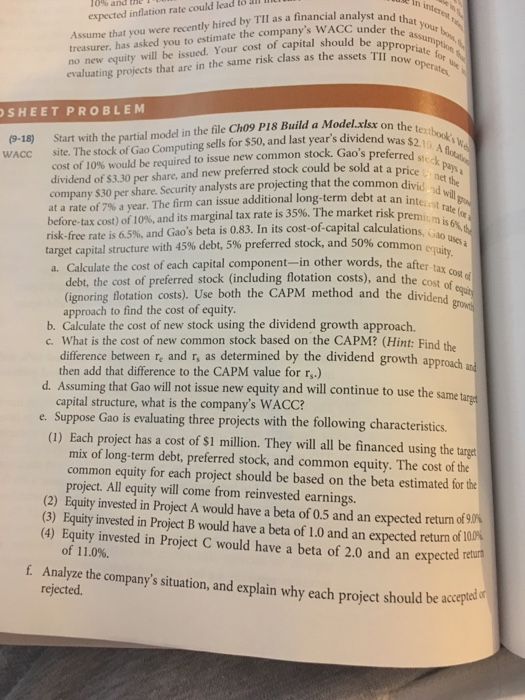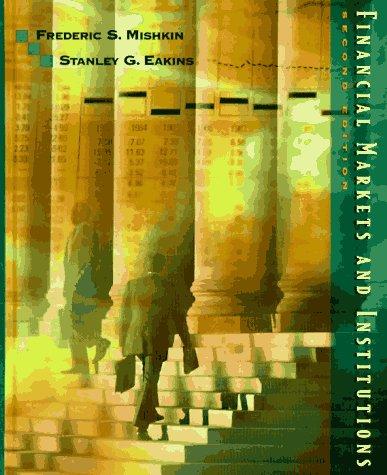n inter Assume that you were recently hired by TIl as a financial analyst a treasurer, has asked you to estimate the company's WACC und. no new equity will be issued. Your cost of capital should be apo evaluating projects that are in the same risk class as the assets TH and that your bo the assum expected inflation rate could lead to hould appropriate for TIl now operates, (9-18) Start with the partial model in the file Cho9 PIS Build a Model.xlsx on the wACC site. The stock of Gao Computing sells for $50, and last year's dividend was $2 SHEET PROBLEM cost of 10% would be required to issue new common stock. Gao's preferred dividend of $3.30 per share, and new preferred stock could be sold ata company $30 per share. Security analysts are projecting that the common divi et the at a rate of 7% a year. The firm can issue additional long-term debt at an i before-tax cost) of 10%, and its marginal tax rate is 35%. The market risk risk-free rate is 6.5%, and Gao's beta is 0.83. In its cost-of-capital calcula target capital structure with 45% debt, 5% preferred stock, and 50% co a. Calculate the cost of each capital component-in other words, the after tw d will go interrst rate (or premi n a mis6%,the ations, Gao uses a mmon equity. debt, the cost of preferred stock (including flotation costs), and thet cot (ignoring flotation costs). Use both the CAPM method and the dividend approach to find the cost of equity areolae e w stc dvend growth approach. c. What is the cost of new common stock based on the CAPM? (Hint: Find difference between re and r, as determined by the dividend growth approach then add that difference to the CAPM value for rs.) d. Assuming that Gao will not issue new equity and will continue to use the same tarud e. Suppose Gao is evaluating three projects with the following characteristics capital structure, what is the company's WACC? (1) Each project has a cost of $1 million. They will all be financed using the targe mix of long-term debt, preferred stock, and common equity. The cost of the common equity for each project should be based on the beta estimated for the project. All equity will come from reinvested earnings. (2) Equity invested in Project A would have a beta of 0.5 and an expected return of (3) Equity invested in Project B would have a beta of 1.0 and an expected return of 100% (4) Equity invested in Project C would have a beta of 2.0 and an expected retur of 11.0% f. Analyze the company's situation, and explain why each project should be acc rejected







